By M. Swift
As late as the second half of the 20th century the institution of human zoos existed in the U.S and throughout Europe. Called “ethnological expositions,” these displays were White ran with the goal of showing the cultural and “evolutionary” differences between people of Western European origin and non-White, non-Western Europeans. In most cases, the displays featured people of color. Another focus of human zoos was to show people such physical deformities or alterations.
HUMAN ZOOS OF THE 19TH CENTURY
The modern definition of “human zoo” has its roots in the circuses and “freak shows” of the 19th century. New York’s Barnum’s American Museum, established by circus promoter P.T. Barnum. Thai-American conjoined twins Chang and Eng Bunker, African-American conjoined twins Millie and Christine McKay, and others were all put on display by Barnum. During the earlier part of the 19th century, Khosian Sarah “Saartje” Baartman was exploited throughout Europe between the late 1790s and into the early 1810s. Her exploitation contributed to the perpetuation of scientific racism and views towards the sexuality of Black women.
EARLY LIFE OF OTA BENGA
Born in 1883, Ota Benga was a Mbuti man from the Kasai River region of Congo. In the early 1900s, Benga’s wife and children were murdered in an attack by Belgian king Leopold II’s Force Publique. He survived because he was away from the village at the time and was put into slavery.
At this time anthropology was still developing at the time and rode heavily on a racial element. Businessman and explorer—because those two jobs went together at the time—Samuel Phillips Verner arrived in Africa on a mission to bring pygmy people back to the U.S in time for the 1904 St. Louis World Fair.
Ota Benga was purchased for salt and cloth along with others. In promoting his “discovery” of Benga, Verner said that he saved the Mbuti man from cannibals. For the next two years, he resided at the Museum of Natural History and traveled with Verner on his trips back to Africa.
For a period he lived with the Batwa people and married another woman—who died of snakebite—before returning to the U.S with Verner. He would arrive in New York City in 1906.
THE BRONX ZOO
In late 1906, Ota Benga was added to the Bronx Zoo’s Monkey House. There he was on display with several primates and presented as the missing link between apes and White people. To add to this, he was given a bow and arrow to shoot targets. He also wrestled with the orangutan Dohong.
Benga proved to be a success for the Bronx Zoo and was soon moved to his own exhibition next to apes. The move was pushed by Madison Grant, who would become better known as a eugenicist several years later.
His display next to apes raised the ire of the Black community who protested the exhibit. He would be poked and touched by the crowds and began to react more negatively towards them. Despite the protests, the Bronx Zoo kept Benga on display for some while before eventually dropping him from their exhibition.
LATER LIFE
He would stay with the vocal opponent to his treatment, Reverend James H. Gordon towards the end of 1906 before living in Brooklyn’s Howard Colored Orphan Asylum. In 1910, there was still press attention towards Ota Benga and Reverend Gordon had him move to Lynchburg, Virginia in hopes of integrating into society. He was given clothes, dental work, and would live in a seminary. Benga was also educated in English at this time. Benga would eventually take up work in a tobacco plant where his co-workers called him “Bingo.”
World War I dashed any dreams of returning to Africa since passengers could no longer leave the U.S. It was on March 20, 1916, that Ota Benga removed the caps over his teeth and shot himself in the heart with a gun he had stolen. He was 32 years old. His remains were never returned to Congo. Instead, he was buried in an unmarked grave in Old City Cemetery’s Black section.
Human zoos would pop up throughout the century. While the practice would largely disappear, the concept would appear a few times in the 2000s.
SOURCES
https://popularresistance.org/deep-racism-the-forgotten-history-of-human-zoos
http://mentalfloss.com/article/30399/1906-bronx-zoo-put-black-man-display-monkey-house
–
M. Swift primarily writes on moments and important figures in Black history for Your Black World. He also writes heavily on wrestling, comics, gaming, and Black sci-fi and fantasy.





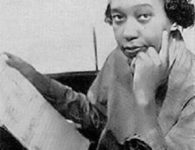




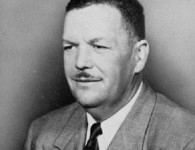

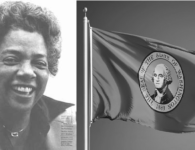


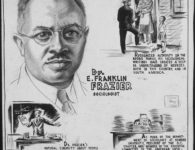


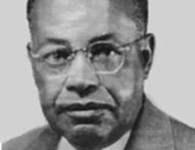

8 Comments
The things i have seen in terms of computer memory is there are technical specs such as SDRAM, DDR etc, that must match the requirements of the motherboard. If the computer’s motherboard is pretty current and there are no os issues, upgrading the memory space literally normally requires under a couple of hours. It’s among the easiest laptop or computer upgrade treatments one can envision. Thanks for revealing your ideas.
I am genuinely glad to read this blog posts which consists of tons of helpful information, thanks for providing such statistics.
Greetings! Very useful advice within this article! It’s
the little changes that produce the most significant changes.
Many thanks for sharing!
This is where the concept memory comes in, because it’s like the foam remembers your bodyshape, allowing you the perfect rest every single period.7 said they want media items (books, CDs, video games) and 35.While they can bend to the shape that you liein it, it’s more ‘general’ rather then the specificsupport that memory foam can do.
Good post. Thanks.
Tossicita Del Levitra Nizagara For Sale Comprar Cialis Red
Secure Ordering Bentyl Discount Germany Precios Cialis Tamoxifen Citrate Online The Best Generic Cialis
This is a cool post thanks a lot.